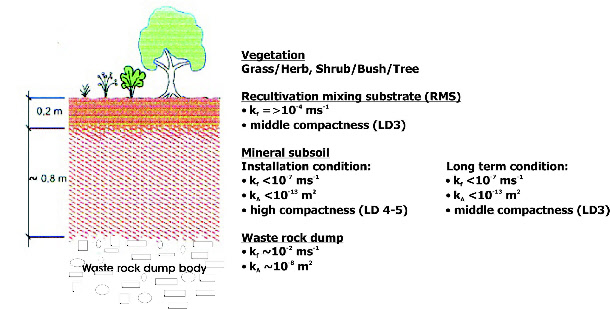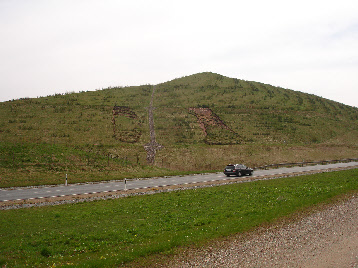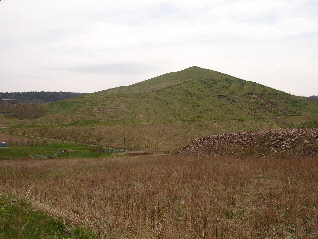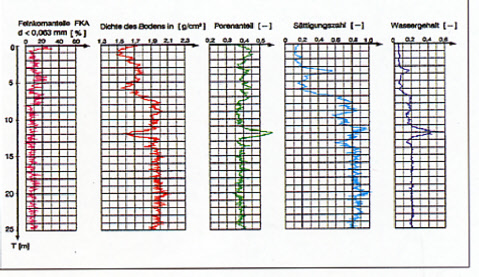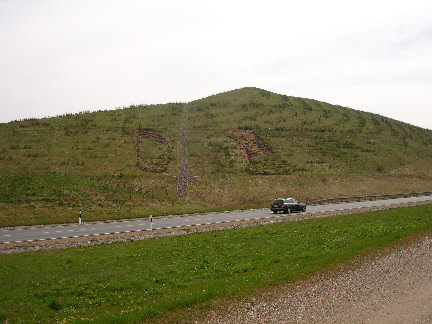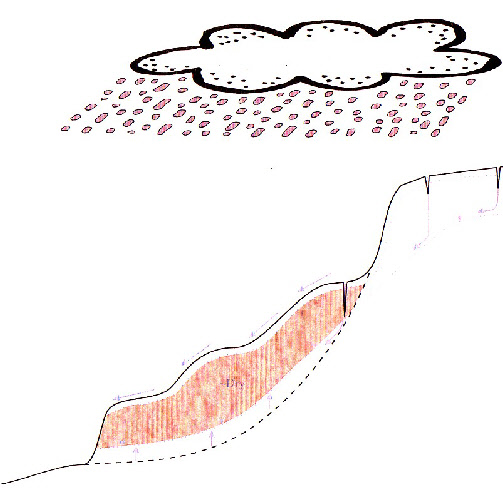
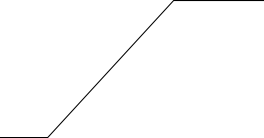

Schematic of a waste rock dump profile
sources of non-uniform infiltration
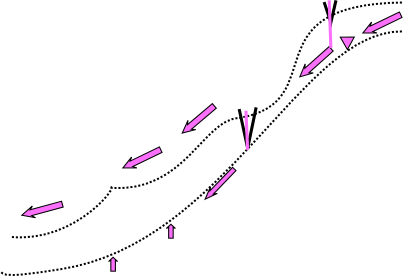
Sources of non-uniform infiltration in waste rock dumps with berms
as the cause of instability with multi-functional cover,
see also M. Lersow [13,15,16]

basal recharge
upslope leading
Schematic and development of a landslide
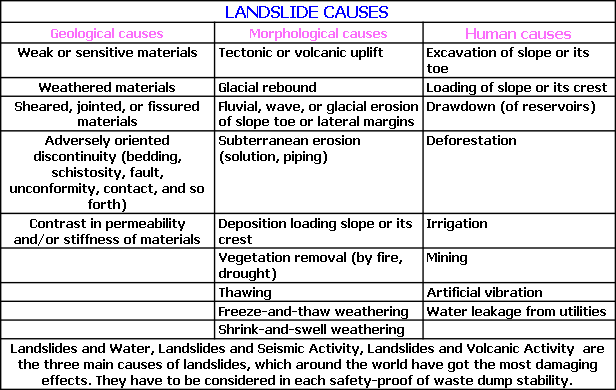
Wismut-Remediation-Project,
waste rock dump No. 366 at the motorway feeder A72, Schlema/Alberoda,
photos by M. Lersow
photos by M. Lersow
Surface of rupture
Sliding of cover

Part of the water-gathering system
Berm

Proof of stability for waste rock dumps
Especially for mighty multi-functional dump slope-systems of mining residue dumps must be subjected the rehabilitation technology to extensive stability proofs, before it is brought to application. This is on the one hand because of the substantial costs, which develop during the final closure of waste rock dump, necessary, which with failure of the dump slopes still multiply (this occurs however with delay, after completion of closure works), on the other hand the necessity is defined by the task. Due to the non-homogeneous and the anisotropic behaviour of waste rock dump-bodies the necessary material-parameters for the calculation-model with stochastic methods must be determined. Safety conditions, which in such a way are determined, reflect the behavior of the waste rock dump body with high probability correctly. Thus the insight became generally accepted, that the safety proofs determined on the basis of deterministic methods are connect with substantial uncertainties. It should be supplemented by stochastic views, if so determined safety factors are not to cause a wrong safety feeling. This becomes the more necessary, if the realization comes, that the safety proof to a large extent from the view time depends. It is generally used practice to differentiate between an initial-stability proof and a longterm-stability proof. On multi-functional dump slope-systems (increase of stability, protection against infiltration, radiation protection, emission protection, vegetation layer etc.) the cover is laid in parallel layers (layer-wise cover construction) and mostly is provided with functional elements. That include the danger of a precipitous change of the permeability and/or the stiffness between the individual layers of the cover and/or individual areas. The emergence of sources of non-uniform infiltration have the consequence of the increase of the danger of a landslide. This generally strengthened by the consolidation process and by the natural erosion (aging) of the cover-material. An indicator for it is the pore water pressure in the cover and in the waste dump body and its behavior over the time. If into the dump-slope-systems a quality assurance system (e.g. pore water pressure transmitters) is integrated, one can determine easily the shear-strengths and thus on this basis local-faithful and time-faithful stability proofs could be carried out, which then should be component of the monitoring software. Loadable international experiences exist both in equipment and in pertinent software. In order to seek out anomalies, geophysical field-tests should go into the Standard-monitoring progam.
Cone pressure-mountains (pc) of a disposal site- body,
dependent from the time t and the depth h
Graph of a combination-cone penetration test of a waste rock dump-body,
CCPT, CPT with radiometric probe and pore- pressure transmitter
Cover-systems for waste rock dumps of Wismut-site Schlema/Alberoda
with function-determined parameters for installation and longterm-condition,
according to Dipl.-Berging. Reinhold Marski, Hamburger Bodenkundliche Arbeiten, Band 56, 2005
Safety definition for circular-cylindrical sliding surfaces
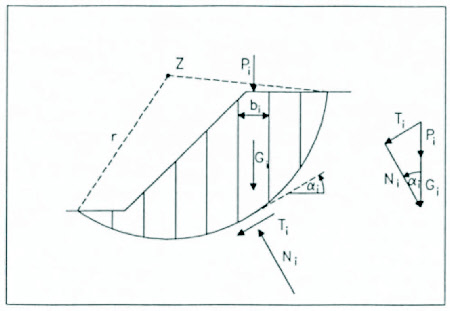
Method of slices by Bishop, see also German-standard DIN 1054, new 2005


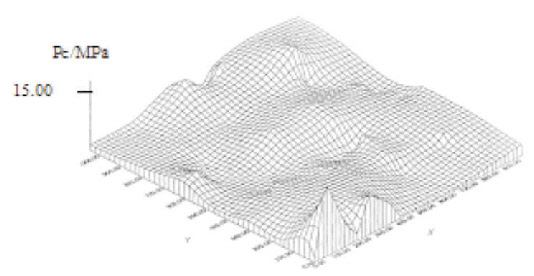
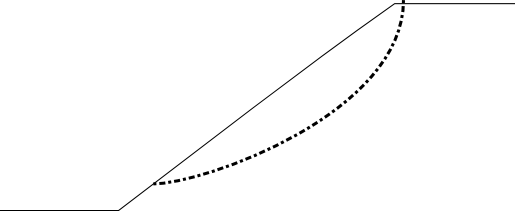
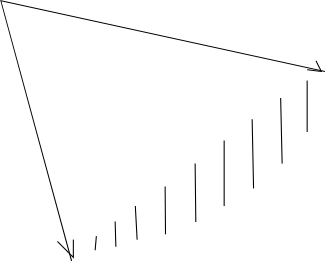
Sliding surface

Blade i
r
Berm 2
Berm 3
Sliding volume


With these parameters determined safety, according to Bishop,
in time of beginning of the sliding in this area:
in time of beginning of the sliding in this area:
Only with the nearly total loss of the shear strength in the sliding surface and/or substantial outside moments, related to the midpoint of the sliding circle, the failure of the stability in parts of this multi-functional cover can be explained. Outside moments can however hardly occur with this example, so that with high probability the volume on the dump water in the sliding surface into a stable condition "swum" downward.
Start of page
